Container Gardening: Grow Your Own Food in Small Spaces!
Want to grow fresh, nutritious vegetables but you don't have the space? Try this easy method, no yard required!
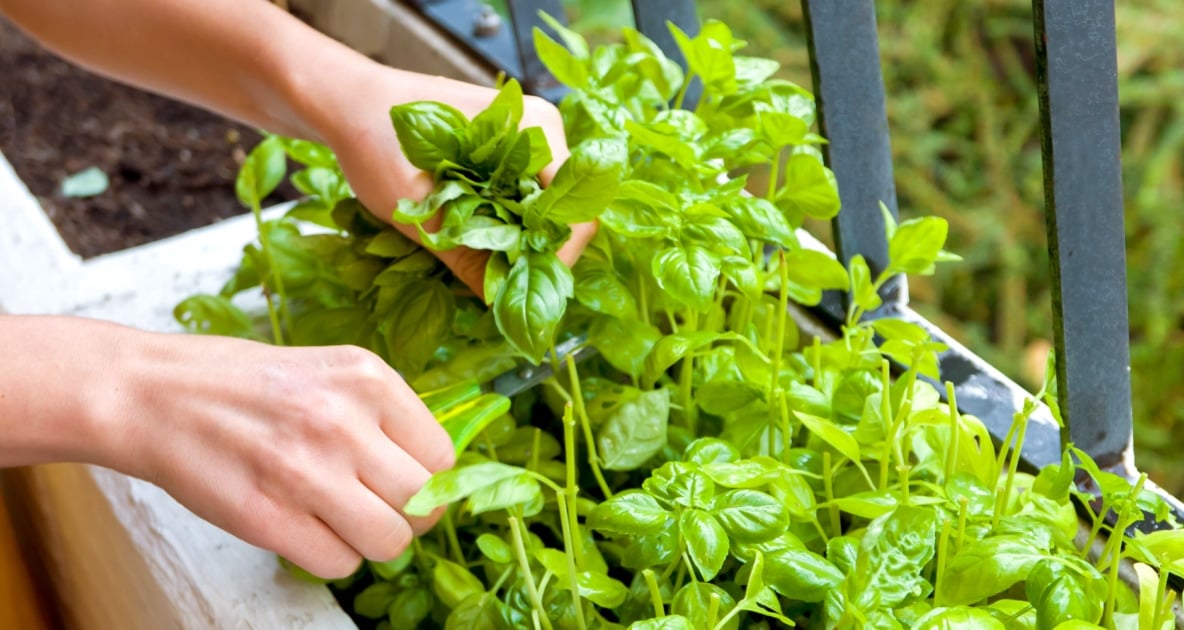
Spring means it’s time to get your hands in the dirt and get your vegetable garden started. What’s that you say? You have no backyard or green space to grow your own food? No worries! You can still raise fresh, nutritious, homegrown vegetables just about anywhere, as long as you can find yourself some sturdy, simple containers.
What Is Container Gardening
Container gardening is an easy, enjoyable way to grow your own vegetables, and can be done on a windowsill, patio, balcony, doorstep, or any space that will provide sufficient sunlight and ease of care.
The best part is, almost any vegetable that will grow in a typical backyard garden can also do well in a container. Some vegetables that are well-suited for container gardening are tomatoes, peppers, eggplant, cucumbers, bush beans, lettuce, spinach, summer squash, radishes, and herbs. Other vegetables that can do well in containers if the conditions are right are cabbage, kale, broccoli, and cauliflower.
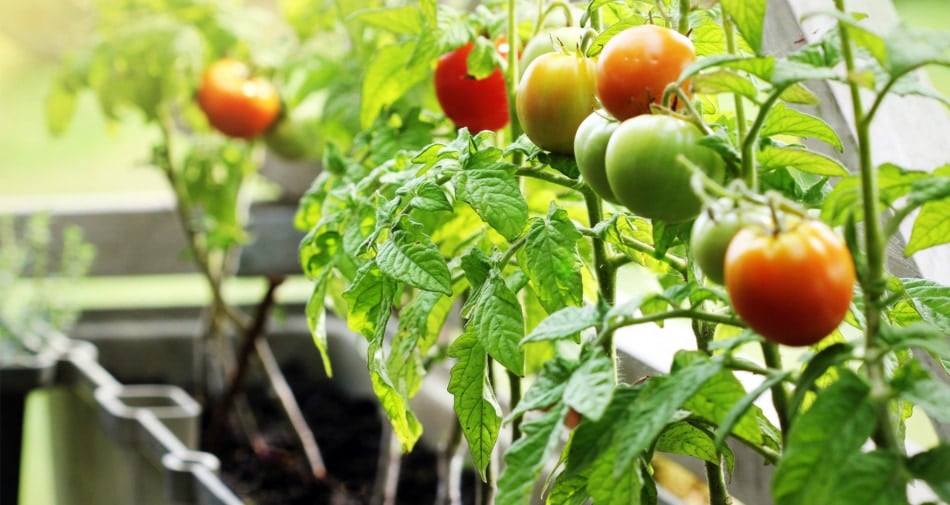
Get Started!
When making the decision to container garden, you will want to think about many of the same things you’d be thinking about if you were gardening on a piece of land, such as healthy soil, adequate sunlight, enough water, good fertilizer, and thoughtful pest management. Of course, when container gardening, you will also have to think about what types of containers you will grow your vegetables in.
What Type of Container Should You Use?
Almost any type of container can be used for growing vegetables. You can choose simple containers like buckets, baskets, tubs, or wooden boxes, or you can get creative and plant in shoes, recycled sinks, and bathtubs, or even a kiddie pool. Whatever container you choose, you will want to make sure you match the type of plant you grow to the size of the container. (Big plant? Think big pot!)
For vegetables such as summer squash, tomatoes, peppers, and eggplant, you will find that five-gallon buckets, or something similar in size, are the best fit. For vegetables like Swiss chard, broccoli, cabbage, and cauliflower, one to two-gallon containers work better. Smaller containers — about 4-6 inches deep — can be used to grow vegetables like lettuce, spinach, and herbs.
You’ll also want to be careful about the material your container is made of. Containers are either porous or nonporous. Plastic, glazed ceramic, and dark glass containers are nonporous and hold water better. Wood, unglazed ceramic (like terra cotta), or papier mache pots are all porous and lose moisture more quickly. You can plant in either porous or nonporous containers, but you will need to adjust how much, and how frequently, you water your plants, and pay special attention to drainage. To aid in good drainage flow, make sure any container you use has several drain holes along the bottom edge.
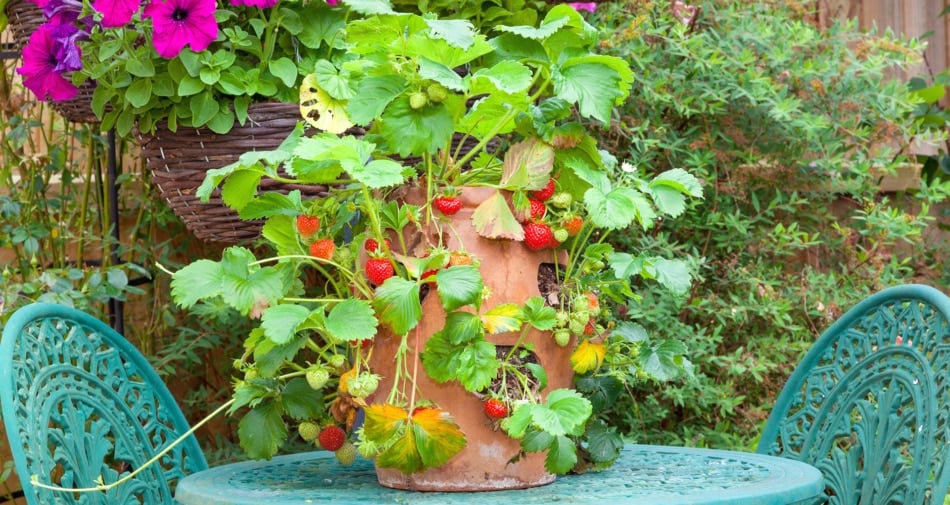
After you’ve chosen containers appropriate to the vegetables you plan to grow, and placed your containers in the warmest sunniest spot you can find, you will need to choose a suitable growing medium. A good growing medium will hold water and provide adequate nutrients and physical support to grow healthy plants. A good growing medium must also drain well, otherwise, your plants could end up in a puddle and drown! A standard potting soil that you find in your garden store should work just fine. You can add some organic compost to your soil mix for heavy feeders like tomatoes and peppers. A good estimate is to fill your container with 2/3 potting soil to 1/3 organic compost.
Once you’ve got your containers filled with healthy soil, you can either direct seed or transplant healthy, strong, seedlings into your containers. What comes next is the usual care and attention you would pay to any of your plants — regular watering, feeding, and some good old fashioned TLC.
Troubleshooting for Container Gardening
Be mindful of overwatering. Make sure your soil is like a damp sponge. Once your plant is fully grown, it is OK to let it go a few days without watering. Be careful that plants in porous containers, like ceramic pots, don’t dry out too much, though. Wrapping a moist towel around the pot sometimes helps. Watch for poor drainage due to inadequate drain holes or compacted soil. It’s never too late to drill more holes. Finally, keep an eye out to make sure your plants aren’t outgrowing their pots. This is a sure sign that the pot may have been too small to begin with, which is why choosing the right container is so important.
Just like any other kind of gardening, container gardening is an adventure, with lots of unexpected twists and turns not always predicted on your road map. However, you can be successful at container gardening if you are attentive and observant. Most of all, don’t forget to take time to enjoy the fruits of your labor!
A Few More Tips For Container Gardening!
- Avoid containers with narrow openings.
- Cheap plastic pots may deteriorate in UV sunlight and terracotta pots dry out rapidly. Glazed ceramic pots are excellent choices but require several drainage holes.
- Wooden containers are susceptible to rot. Redwood and cedar are relatively rot resistant and can be used without staining or painting. Avoid wood treated with creosote, penta or other toxic compounds since the vapors can damage the plants. One advantage of wooden containers is that they can be built to sizes and shapes that suit the location.
- Use containers between 15 and 120 quarts capacity. Small pots restrict the root area and dry out very quickly. The size and number of plants to be grown will determine the size of the container used. Deep rooted vegetables require deep pots.
- Make sure your pot has adequate drainage. Holes should be 1/2 inch across. Line the base of the pot with newspaper to prevent soil loss.
- In hot climates use light-colored containers to lessen heat absorption and discourage uneven root growth.
- Set containers on bricks or blocks to allow free drainage.
- Line hanging baskets with sphagnum moss for water retention. Keep baskets away from afternoon sun.
- If you choose clay pots, remember that clay is porous and water is lost from the sides of the container. Plants in clay pots should be monitored closely for loss of moisture.
See the 10 Easiest Vegetables To Grow in Pots.
Sherie Blumenthal
Sherie Blumenthal is a Food Access Coordinator with Lots to Gardens, an urban gardening and community nutrition initiative sponsored by St. Mary’s Health System in Lewiston, Maine.


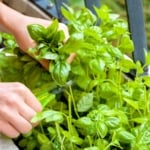
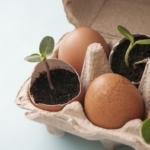
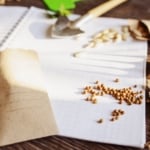
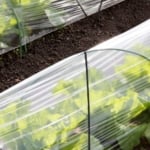
Great article and a great incentive to grow your own food. I have grown flowers, herbs, strawberries, and cherry tomatoes on my balcony (totally winged it and, voila, it worked! Someday I’d like to have a home and grow a nice veggie and flower garden, but I’m never sure about the yield, how much is enough or not too much (single person).
This is a very interesting article. I just watched a video from India on container gardening and it’s amazing how much produce can be harvested from a few containers. The gentleman doing the video said the easiest vegetables to grow in containers are chili peppers, tomatoes, garlic (must mix sand into the soil), peas, radishes, cabbage, and carrots. He said for carrots make sure to choose seed varieties that have a quick maturing time.
For the tomatoes, he stripped the bottom leaves from the plants before transplanting them into pots and he planted them extra deep into the soil so they formed sturdy stems. It worked like a charm for him. As they grew he supported them with a trellis.
For the chili peppers, he harvested them once they changed color from green to red or yellow. He said to plant a few plants per 6 – 8 inch pot for best pollination.
For the cabbage, he grew one plant per 6 – 8 inch pot (from seed).
For the radishes, he sewed seeds 3 inches apart. He said radishes grow exceptionally fast in pots. He harvested them when the “roots,” which are actually the radishes, were 1.5 inches wide.
For the garlic, he kept the soil dry and harvested them once the top leaves turned brown and looked like they were dying. He cut the greenery from the garlic bulbs and hung them to dry.
He fed all plants except garlic with compost every couple of weeks and nothing more.
What is a “very interesting article’? There is no link or reference for us to go to the article mentioned.
Deborah, Jenny is talking about our article on Container Gardening, not another article.
Thanks for all the sharing! Since we have an above ground pool and deck area in our new location here in Mid Michigan…I’ve found certain “herbs” will keep hornets at bay…So I am doing Pots with Lemon Grass, Mint, Rosemary…Also…Cut a “lemon in half and put 10 to 12 WHOLE cloves pushed into it. Place in saucers around your sitting area. Hornets HATe Lemon and Clove. Also Keep a spray bottle of “JOY” brand lemon dish washing soap(MUST be “Joy brand) Fill water bottle “half full with EQual amount water.
Swirl, Not shake….Keep a few bottles on your deck/ in your garage/polebarn, where ever.
ONE SQUIRT and it “suffucates them…Can’t fly! die within minutes! Love it!~laughing~
Cheap, effective, and smells good! No nasty chemical sprays, that “blow “back in your face” from wind spurts!
You can “also “saturate a hornets nest , in SAFE conditions(dusk)…Mainly to be used for “filling “one at a time.It WORKS! Now that they are “waking up(Spring) I’ll see a cuple in the attached garage or “on my glass sliding door”.ZAP! Knocks them down, one more ZAP, for “good measure…a couple minutes(can’t fly due to dishwashing liquid) and See ya!
Thanks for the ideas . Will try them!!!
Container gardening is popular but is it truly safe? We have become a society that relies heavily on plastics. Much of our store bought food is wrapped, stored, and sold in plastic. Should we be growing it in plastic too? Many produce farms are now growing food hydroponically, completely in plastic filled with chemicals to make the plants grow. Soft drinks, water, tea, energy drinks are sold in plastic bottles. We are told not to allow these containers to get hot or we are drinking plastic slurry.
My advice would be to grow a garden the old fashioned way if you can do so. No yard? Ask a local farmer if you can plant a few rows along with his crops, to share. Most will do so.
Not everyone can find a farm close enough by where it can be tended regularly. You must be able to check on a garden regularly because of pests and diseases. It’s not always ideal to do container gardening but it’s better than nothing at all. There are fabric pots you can also buy which are probably better.
You always can try and find food grade containers from restaurants or ice cream stores, I use them for peppers, tomatoes and herbs.
Local farmers quite often use bad pesticides for their crops, I wouldn’t want that in my food and even if I found an organic gardener nearby I can guarantee you they aren’t going to allow you to plant anything in their fields. For one, let’s say they are growing cotton. There are too many pests that could damage their crops and vice versa. I container garden, and will continue to do so, and I use molasses buckets from cattle farmers, but I have to drive 50 miles one way just to get there. I loaded my truck with as many as I could for each trip and these buckets will last for years, and they are food safe plastic. Even rain water can be collected in food safe plastic as well, that is a win win situation for someone who cannot garden the old fashioned way whether it is because of old age, medical conditions, or for any other reason. In the south we have exceptionally bad bugs in the soil out here, the worst are the RKN, the grubs, etc and growing anything in those conditions is very difficult. People want to grow their own food, we should all allow for how they want to do it and encourage them to do so, not do the opposite.
I am doing a container garden for the first time. I have planted my seedlings and some store bought starter plants. I have got a kiddy pool full of pumpkins, squash, and zucchini.
They where all growing well, and they have just seem to stop. What am I doing wrong?
Even my watermelon plant has just stopped growing. They are not dead, and I am making sure the soil is moist, but not drowned. I am afraid that nothing is going grow.
I love all you good ideas. You share so much helpful information. Thank you so much.
(at Lee about Mexibells: http://m.bonnieplants.com/homedepot/varieties/tabid/125/id/107/Mexibelle.aspx)
I bought some “Mexibells” at Lowes in Dallas. Does anyone know their origin or do they have another name I’m not aware of. They are great if you like spicy bell peppers.
When placing rocks in the bottom of your containers wrap them in landscaping cloth and tie with a zip tie. This way you aren’t sorting rocks out of your soil at the end of the growing season and you just rinse them off and store for next year.
I am doing the straw bale gardening this year— looks very promising!!!!